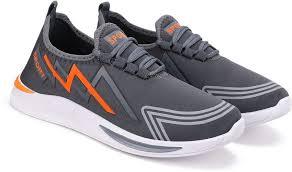Gym Shoes Market Buyer Analysis: Purchase Behavior, Preferences, and Influencing Factors by Region

The gym shoes market continues to grow rapidly, not just because of product innovation or branding but also due to evolving buyer behavior. Understanding how consumers make purchasing decisions—what they prefer, and what influences them—offers valuable insights into shaping marketing, design, and distribution strategies.
This article breaks down buyer analysis in the gym shoes market by examining purchasing behavior, consumer preferences, and the key influencing factors across major global regions.
1. Global Buyer Behavior Overview
In the evolving landscape of the gym shoes market, today’s consumers are more informed, more health-conscious, and more brand-aware than ever before. Whether they’re buying for performance, fashion, or everyday use, gym shoe buyers now demand more than just a basic pair of trainers.
Key Buyer Trends:
-
Multi-Functionality: Consumers want shoes that work for gym training, walking, and casual wear.
-
Comfort & Fit: Ergonomic design and cushioning are top priorities.
-
Brand Loyalty: Consumers often stick to trusted names unless strong value or innovation is presented elsewhere.
-
Sustainability: Eco-friendly materials are gaining attention, especially among Gen Z and millennials.
-
Online Research: Reviews, influencer endorsements, and social media content heavily impact purchase decisions.
2. Regional Buyer Insights
North America
Purchase Behavior:
-
High frequency of purchases due to fitness culture and disposable income.
-
Online shopping dominates, especially through brand-owned platforms.
Preferences:
-
Focus on performance-oriented shoes for specific workouts (e.g., running, weightlifting, HIIT).
-
Strong interest in smart shoes and fitness tracking integrations.
Influencing Factors:
-
Brand reputation, technology, and customer reviews.
-
Celebrity endorsements and limited-edition drops.
Europe
Purchase Behavior:
-
Value-conscious buyers with a focus on quality and durability.
-
Balanced mix of online and offline purchases.
Preferences:
-
Eco-conscious designs, minimalist aesthetics, and sustainable brands.
-
Gym shoes used interchangeably for both workouts and urban lifestyle.
Influencing Factors:
-
Environmental impact, local craftsmanship, and comfort.
-
Loyalty programs and ethical sourcing transparency.
Asia-Pacific
Purchase Behavior:
-
Rising middle-class consumers fueling demand.
-
Strong influence from social media, trends, and peer recommendations.
Preferences:
-
Trendy, colorful, and affordable gym shoes.
-
Lightweight and breathable materials due to tropical climates in many parts of the region.
Influencing Factors:
-
Price sensitivity, influencer marketing, and product accessibility.
-
Local festivals and promotional campaigns boost seasonal sales.
Latin America
Purchase Behavior:
-
Budget-conscious buyers with growing interest in branded footwear.
-
Majority shop via retail stores, though e-commerce is gaining traction.
Preferences:
-
Durable and versatile gym shoes suitable for both exercise and daily wear.
-
Preference for international brands with local cultural appeal.
Influencing Factors:
-
Discounts, peer influence, and localized marketing campaigns.
-
Association with sports stars and fitness influencers.
Middle East & Africa (MEA)
Purchase Behavior:
-
Emerging interest in fitness and athleisure.
-
High-end brands are status symbols in some markets (e.g., Gulf countries).
Preferences:
-
Premium and designer gym shoes preferred in urban hubs.
-
Lightweight and breathable shoes for hot climates.
Influencing Factors:
-
Fashion appeal, quality perception, and availability in local markets.
-
Religious/cultural influences on design and brand presentation.
3. Key Influencing Factors Across All Regions
Regardless of geography, certain factors consistently shape buyer decisions in the gym shoes market:
-
Fit and Comfort: Top priority across all age groups and genders.
-
Product Reviews: Trusted sources online can make or break a sale.
-
Brand Perception: Especially important in fashion-forward and status-driven segments.
-
Innovation: Features like arch support, smart insoles, and breathable fabrics draw attention.
-
Sustainability: Increasingly relevant, especially in developed markets.
4. Generational Preferences
-
Gen Z (Under 25): Influenced by social media, trends, and sustainability. Loyal to influencer-backed brands.
-
Millennials (25–40): Value performance, aesthetics, and durability. Tend to research extensively before buying.
-
Gen X & Boomers (40+): Prioritize comfort and value for money. Often prefer tried-and-tested brands.
Conclusion
Buyer behavior in the gym shoes market is becoming more complex and regionally nuanced. Brands that align their offerings with localized preferences, digital marketing trends, and consumer values such as sustainability and comfort will be best positioned to capture and retain customer loyalty. As the market continues to grow globally, a deep understanding of regional and demographic differences is no longer optional—it’s essential.
- Art
- Causes
- Crafts
- Dance
- Drinks
- Film
- Fitness
- Food
- Παιχνίδια
- Gardening
- Health
- Κεντρική Σελίδα
- Literature
- Music
- Networking
- άλλο
- Party
- Religion
- Shopping
- Sports
- Theater
- Wellness


